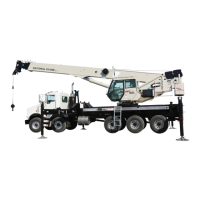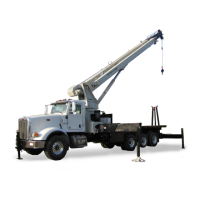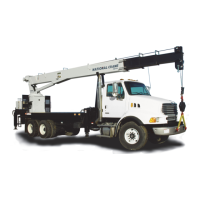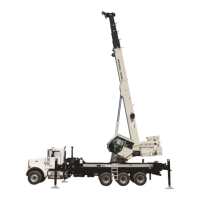HYDRAULIC SYSTEM NBT40 SERVICE MANUAL
2-18 Published 8-01-2017 Control # 287-11
Binding Spools
Some of the most common causes for stiff spool movement
or jammed spool action are system overheating, excessive
pressure, contaminated or deteriorated hydraulic oil, or
warped mountings. When scorched or deteriorated hydraulic
oil or contamination is the cause, flush the system and
replenish with clean hydraulic oil. If the spool bores are badly
scored or galled, the valve must be removed for servicing.
Warping occurs when mounting plates are not level or they
become distorted from machine damage. The valve can be
shimmed level to correct this problem.
Check the valve for rust. Rust or dirt collecting on the valves
can prevent free movement of the spool, and keep it from the
true center position. Excessive system pressure can create
both internal and external leaks in valves that are otherwise
sound. Only qualified technicians using the correct
equipment should make pressure adjustments when
pressure adjustments are needed.
Main Control Valve
Removal
1. Tag and disconnect the hydraulic lines from the valve.
2. Cap the lines and plug ports.
3. Loosen and remove the valve mounting bolts and
remove the valve bank.
Installation
1. Bolt the directional control valve to the enclosure.
2. Reinstall the hydraulic lines as per removal tags.
Functional Check
1. Start the engine and run it at normal speed.
2. Operate the control levers of the valve bank(s). Check
for smooth operation of cylinders and motors.
3. Check the valve bank and lines for leakage. Make
repairs as needed.
Hydraulic Remote Controllers
The crane functions are controlled by hydraulic remote
controllers (HRC) on the armrest of the operators seat. The
controllers operate from a load sense pilot pressure which is
generated by the pump and controlled by the main control
valve. Pilot pressure is applied to the bonnets on each side
of the control valve spools to shift the spool in the required
direction.
Outrigger Manifolds
The outrigger functions are controlled by two manifolds
located at the front and rear outrigger boxes. The front
manifold contains the extend/retract valve, front outrigger
component valves, and the optional front jack valve. The rear
outrigger manifold contains the rear outrigger component
valves. The valves are operated by solenoids that are
controlled by switches on the outrigger control boxes located
on the side of the truck bed. An optional hand held outrigger
control box can be installed in the crane cab.
Holding Valves
Pilot operated check valves located in the valve block on
each cylinder acts as holding valve to keep the cylinder from
collapse due to hose failure. Do not remove a valve block
unless the cylinder is completely retracted.
Do not try to repair or set the valve pressure. If a holding
valve is suspect, replace it with a new valve.
Swing Gearbox
The standard Glide Swing gearbox is locked in place by an
integrally mounted spring applied disc brake. The swing
brake switch located on the front console and is used to
activate the swing brake and park the turret in position. Press
the switch to activate the swing brake to keep the turret from
rotating. A red LED is illuminated when the swing brake
switch is applied.
The swing control lever can be used to slow and stop the
swing by moving the control lever to the opposite direction of
the swing. For example, if the lever is pushed forward for a
clockwise swing, pull the lever back to slow and stop the
swing.
Crane Function Power Switch
The crane function power switch in the crane cab energizes
a solenoid valve on the crane manifold located in the turret to
activate the controllers in the crane cab. The operator must
be in the operators seat for the crane function power switch
to be active.
HYDRAULIC PUMP
Description
The hydraulic system pressure is supplied by a axial piston
hydraulic pump mounted on the truck power take off (PTO).
The hydraulic piston pump requires a PTO rating of 55.9 kw
(75 hp) per 1000 rpm of shaft speed with 644 N.m (475 lb-ft)
of torque.
Removal
If pump replacement is required, the hydraulic fluid should
also be replaced to avoid possible contamination.
1. Drain the hydraulic tank.
2. Tag and disconnect the hydraulic lines from the pump.
3. Remove the bolts from the pump rear mounting bracket.
Reference Only
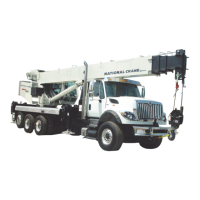
